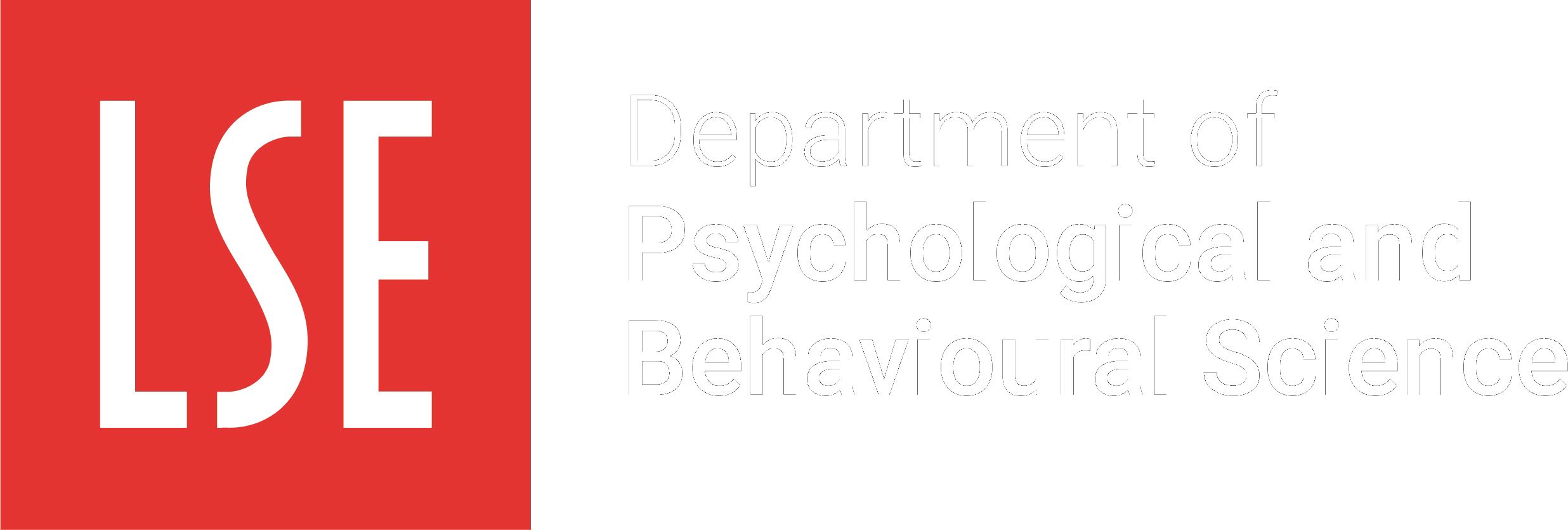 In this blog post, Anastasiya Nurzhynska (Executive MSc in Behavioural Science) dismantles how public campaigns are traditionally designed using marketing methods and why they may not be effective at changing our behaviours.
In this blog post, Anastasiya Nurzhynska (Executive MSc in Behavioural Science) dismantles how public campaigns are traditionally designed using marketing methods and why they may not be effective at changing our behaviours.
“As a communication specialist I have implemented more than 25 campaigns (so far). But not all of the campaigns brought an expected result. Some didn’t bring any. No one would question the growing importance of communication. During my international development work, I have become acutely aware of its limits and weaknesses.”
This is how my essay started when I applied to the Executive MSc in Behavioural Science at LSE two years ago. I graduated this year inspired and empowered by the insights from behavioural science and how it can improve communication for development. But is the communications sector ready to change?
The price of poor quality communication
Governments, donors and nonprofits still heavily focus upon “increasing awareness” and “improving attitudes”. At the same time, evidence from behavioural science shows that providing information does not necessarily re-frame people’s mindsets. Changing attitudes remains extremely difficult.
Information campaigns that lack evidence and testing even can backfire and split societies. For instance, one study showed that when fear messaging was used to address misleading information about the dangers of vaccinations e.g. using an image of a sick child, these actually reduced vaccination intent among parents and increased beliefs in vaccine side effects (Nyhan et al., 2014).
How behaviours may be influenced
Overall, a person’s attitude comprises three dimensions:
- Cognitive
- Affective
- Behavioural
Traditional communication strategies will treat these elements as consecutive. First, a communication campaign would target awareness, then there will be an attempt to change perceptions and emotions towards the issue and only then a behaviour would be approached.
But the behavioural dimension is not always connected to cognition. People may decide to act in a certain way, not only because they understand why it is important or support the cause, but because of contextual elements such as social norms, the authority of the messenger, defaults and others. Decision making is influenced by a variety of factors (not always conscious) such as attitudes, beliefs, biases, motivations, and other factors and is not always rational. So, we shouldn’t always start with increasing knowledge.
Of course, it doesn’t mean that governments should focus only on nudges either. Providing information is an essential part of transparency and democracy. The cognitive dimension is also likely to be influenced by an information-based campaign about a newly launched service or policy. But we should be careful when trying to provide information and arguments that are about “pure good”. Explaining again and again why domestic violence is bad or gender equality is important may at some point irritate people or make them tired of the topic.
Interventions that aim to change peoples’ attitudes also require considerable resources and time. Sometimes it takes generations to change norms and values that are underlining factor of attitudes. So, reshaping the context has been found to be more cost-effective than ‘awareness raising’ or ‘attitude changing’ campaigns. This has become clear with the many communication campaigns around COVID-19. Instead of relying on thoughtful deductions, COVID-19 related campaigns have focused on non-conscious quick reactions (stickers in shops to ensure distance). Nobody enjoys wearing masks, so should we aim to change these attitudes anyway?
Can you sell a good behaviour?
Some nonprofits and governments utilize methods that are widely used in commercial marketing or, “sell” a good behaviour. The traditional marketing model, for instance, the AIDA model is similar to any decision-making process and when used in a campaign will aim to:
Attract attention.
Maintain interest.
Create desire.
Stimulate action.
However, reducing the decision-making process to a simple stimulus-response scheme has limitations. The decision to buy is often based on availability, pricing, customer satisfaction, and recommendations. Attitudes to social topics involve identity, deep-rooted beliefs, social norms and benefit perception. So what these marketing models may do is to discount our irrationality. Whereas marketing mainly follows the traditional economic model of rational choice or, “I know about this brand, I like it, I will buy it”, in reality people often make emotional and spontaneous decisions.
Our socially responsible behaviours e.g. environmental, health choices, are limited by biases.
So what can we do?
Considerations to improve public information campaigns
First, we need to be careful in relying upon public surveys and traditional measurements of public attitudes. It is difficult to observe attitudes. People do not always reveal their real attitudes. Sometimes people are not able to identify their real attitudes to themselves as well. Attitudes and behaviours, when conducting interviews and surveys, are supposed to be treated as interconnected aspects but research is still needed to explore whether those aspects are actually interconnected.
Second, we should not evaluate the effectiveness of a campaign by just taking into account knowledge or awareness which are, in fact, not the indicators of a campaign’s success. When measuring campaign effectiveness, knowledge should be assessed in relation to the changes in behaviours or real life impact.
Third, we need to remember that attitudes are stable and difficult to reframe. But behaviours can be directly influenced through their context and environment changes (how people perceive social norms, incentives etc).
Fourth, we need to be accountable for the spillovers of communication campaigns and consider ethical criteria more carefully.
All articles posted on this blog give the views of the author(s), and not the position of LSE Department of Psychological and Behavioural Science, nor of the London School of Economics and Political Science. Featured image credit: by Jordan Hopkins on Unsplash.




